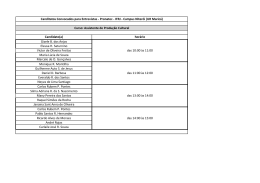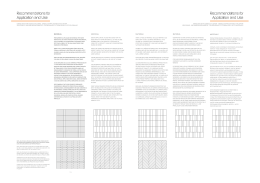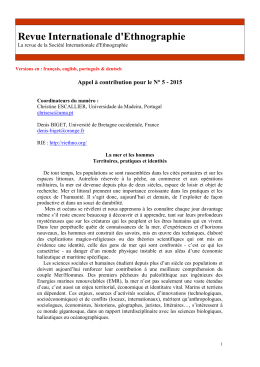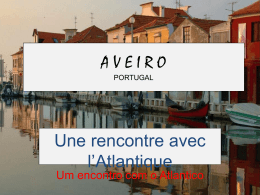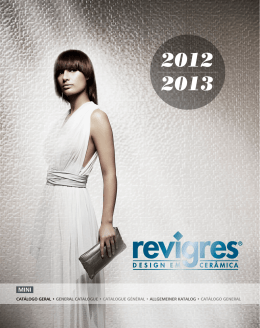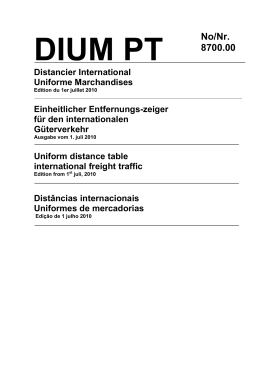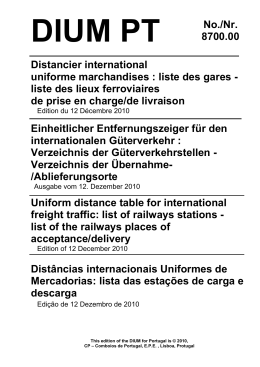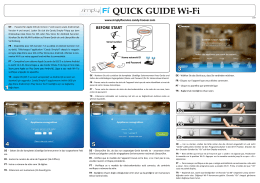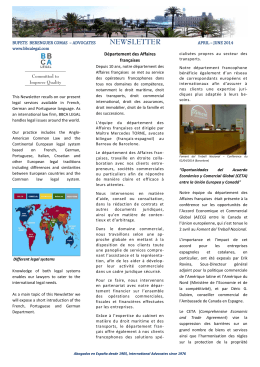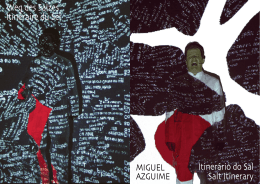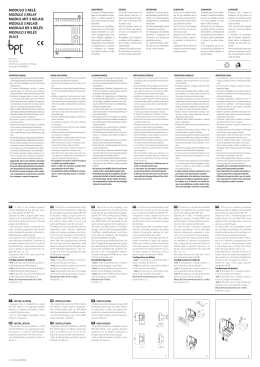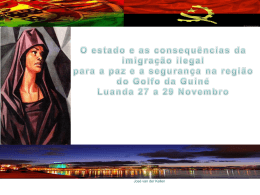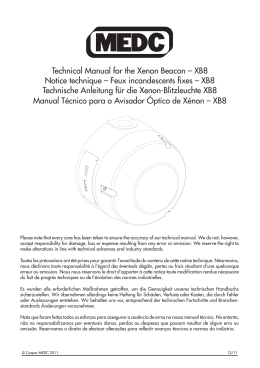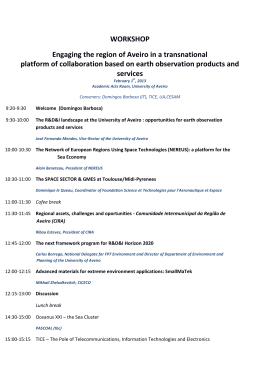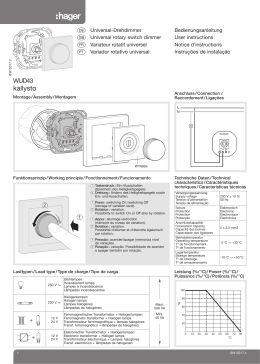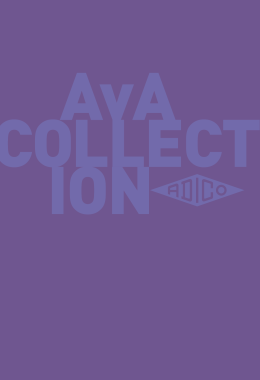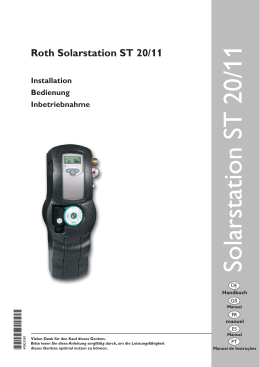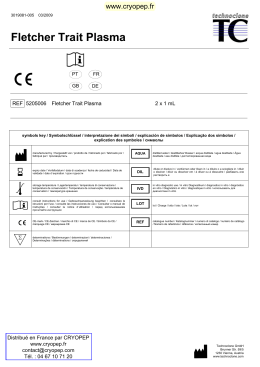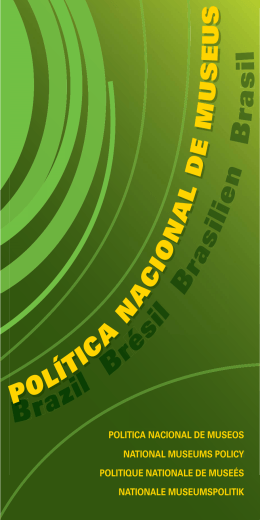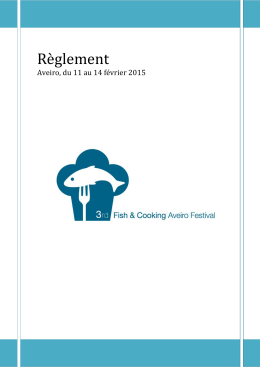N° 14 May 2004 The architectural magazine of Alcan Composites international Malaysia Ministry of Finance, Putrajaya Polen Carrefour, Krakau Brazil Ohtake Cultural, São Paulo Portugal Estádio de Aveiro, Estádio de Coimbra The Netherlands Aluminium Centrum, Houten U.S.A. Hotel Westin Times Square, New York Deutschland Porsche, Dortmund Project Ministry of Finance Building Putrajaya, Malaysia Owner Ministry of Finance Architects GDP Architects Sdn Bhd Fabricator NYC Engineering Sdn Bhd & Lucksoon Contracts Sdn Bhd 1 3 Year of Completion June 2002 Product 19,000 m2 of ALUCOBOND® Plus, 4 mm Bronze metallic 4 1 The contemporary tropical architecture is a fusion of distinct Asian culture. 2 The intricate geometrical pattern reflects a subtle Islamic theme. 3 Horizontal section 4 Detail section 2 A modern design with a cultural fusion Ministry of Finance, Putrajaya, Malaysia 2 Malaysia’s new Ministry of Finance (MOF) complex is one of the most striking and arresting structure found within the Putrajaya precinct, the nation’s new Federal Government Administration Centre. It is a sprawling landmark that marries contemporary architecture with distinct cultural motifs. According to GDP Architects Sdn Bhd, their winning design was “inspired from an initial idea rooted in cultural details and realised through contemporary tropical architecture”. The MOF building design is, thus, rich in layering of space and contrast of surfaces that are not only characteristic of tropical architecture but also a mark of Malaysia’s distinct Asian culture. The building comprises three main blocks, with the Central block façade showcasing an intricate geometrical pattern that reflects a subtle Islamic theme. ALUCOBOND® panels were utilised to fashion the graceful arches and columns that shape the patterned frontage. In order to create the precise shapes of this complex design, an accurate control of dimensions is necessary and to this end, ALUCOBOND® is the perfect material. The aluminium panels are well known to be extremely versatile due to easy moulding and detailing. ALUCOBOND®, being lightweight and modular, was used to highlight the lightness of the front arches and sunscreens against the solid pre-cast concrete walls of the MOF complex. Apart from cladding the arches and sunscreens, ALUCOBOND® was also one of the façade elements used to form the outer walls of the building. ALUCOBOND® was used to produce an eye-catching trimming of bronze-tinted glazed walls that brings out the contrast with the spray-painted pre-cast concrete panels of the main solid frontage. For their design of the MOF complex, GDP Architects Sdn Bhd won the Architectural Design Award in the Malaysian Construction Industry Awards 2002. Tradition und Zeitgenössisches Eines der atemberaubendsten Gebäude Malaysias, das neue Finanzministerium, besticht durch abwechslungsreiche Verbindung modernen Designs und traditioneller Motive. Strukturen und Freiräume kokettieren als Zeichen tropischer Architektur. ALUCOBOND® umhüllt Bögen und Säulen und verstärkt die Unbeschwertheit der Arkaden. Es ist das ideale Material dank geringem Gewicht und vielfältigen Verarbeitungsmöglichkeiten. Es wurde auch weitgehend für Teile der Fassade eingesetzt. GDP Architects erhielten dafür den Preis der malaiischen Bauindustrie 2002. Un mariage de design contemporain et de culture traditionnelle Un des bâtiments les plus prestigieux de Malaisie, le nouveau Ministère des Finances, séduit par la liaison du dessin moderne avec des motifs traditionnels. Les structures et les espaces libres représentent une coquetterie et le signe de l’architecture tropicale. ALUCOBOND® fût choisi car il permettait de respecter l’élégance des colonnes composant la façade. L’ALUCOBOND® est aussi le matérial idéal pour réaliser les formes complexes et précises. Les architectes de GDP ont reçu le prix de l’industrie du bâtiment Malaysien en 2002. Project Aluminium Centrum, Houten, The Netherlands Owner Aluminium Centrum Architect Architectenbureau Micha de Haas, Amsterdam Year of construction 2001 Installer Alcan Service Centre Nederland, Breda / Hoogerwaard Gevelbouw, Rotterdam Type of construction Traypanels, hooked on bolts in U-profiles Product 1700 m2 of ALUCOBOND® Silvermetallic 1 The Aluminium Forest Aluminium Centrum Houten, Netherlands In November 2001, the Dutch Minister of Economic Affairs opened the Aluminium Centrum in Houten, the Netherlands, a unique aluminium building. The Aluminium Centrum is the umbrella organisation for the Dutch aluminium industry. The primary function of the information centre is to display aluminium products. The building is clad in one colour of material, symbolising the strength of aluminium as a high-tech, industrial, and an environmentally aware product. The remarkable architecture and innovative technology give the building an extraordinary character. The design is from Micha de Haas, winner of the contest, in which 64 architects participated. Inspired by the typical Dutch poplar-strewn landscape, the architect placed the building on 368 aluminium columns to accentuate the lightness and strength of aluminium. He calls Der Aluminium-Wald Im November 2001 wurde das einzigartige Gebäude der Aluminiumzentrale in Houten eröffnet. Diese Dachorganisation der niederländischen Produktionsund Verarbeitungsindustrie stellt Aluminiumprodukte aus und verbreitet sie. Der Neubau wurde komplett in Aluminium erstellt, um einerseits die Stärke des High-Tech-Produkts zu zeigen und andererseits Umweltbewusstsein zu dokumentieren. Das Design von Micha de Haas, Gewinner des Wettbewerbs, 4 ist geprägt von der typischen Landschaft mit verstreuten Pappeln. Er setzte das Gebäude auf 368 Aluminiumsäulen, um so Leichtigkeit und Stärke von Aluminium zu demonstrieren. Er nennt das Objekt: Aluminium-Wald. Die ‹Baumwipfel› befinden sich sechs Meter über dem Boden und bilden das Bürogebäude. Eine Besonderheit sind die in die Fensterbänke integrierten Regenrinnen mit U-Profilen in der Unterkonstruktion. Sie stellen die ästhetische und funktionelle Vielseitigkeit it ‘the aluminium forest’. The lightweight treetops, which are raised 6 meters above the ground and form the actual office building, resemble an aluminium casting. The windows are placed irregularly as deep incisions in the aluminium casting. The architectural design of the office building originally consisted of 600 mm wide aluminium panels, all in one piece with a good surface flatness, straightness and rigidity. Alcan Nederland worked with the architect right from the beginning of the project. With over 30 years of experience with ALUCOBOND® systems, they proposed to use ALUCOBOND® tray panels suspended on aluminium bolts using aluminium U-profiles for the façade. Alcan Nederland engineered the detailing of the façade, and fabricated the ALUCOBOND® panels and aluminium substructure profiles. Panel dimensions von Aluminium unter Beweis. Ursprünglich sollte die Fassade mit 600 mm breiten Aluminiumblechen gestaltet werden. Die Zusammenarbeit mit Alcan Nederland brachte dann ALUCOBOND® ins Spiel. So konnten das Fassadenraster und der Verschnitt optimiert werden. Die Platten in Silbermetallic verstärken die Erscheinung des Gebäudes durch Leichtigkeit, Widerstandsfähigkeit und Eleganz. Jeder, der sich für moderne Architektur interessiert, sollte dieses Objekt besichtigen. PHOTOS: WILLEM FRANKEN FOTOGRAFIE, UTRECHT 3 4 1 The ‘Aluminium Forest’ with night illumination. 2 Patio, special attention to the window sill detail. 3 Horizontal section 4 Vertical section of the window sill 2 were optimised, and 1150 mm wide ALUCOBOND® tray panels were applied. By increasing the width of the panels it reduced the number needed, thus reducing production costs, while enhancing the building with a more robust look. The panels were partly fabricated onsite; after hanging flat unfinished tray panels on the U-profiles, the parapet return and the lower cladding end were folded into one piece, which resulted in reduced volume of material to be shipped, and a reduction in transportation costs. Special details were used for the window sill cover. The drainage runs through the aluminium profiles of the support system, which results in less pollution of the façade itself, reducing the total cost of construction. For the 225 mm deep window jamb, 25 mm wide panels were applied. These panels were hooked on the U-profile substructure and clamped on a special ALUCOBOND® profile mounted to the window styles. This guaranteed continuous drainage through the Uprofiles, and did not disturb the vertical-lined architectural design. The Silver metallic ALUCOBOND® strengthens the aluminium appearance of this building and guarantees long-lasting quality. Everybody who is interested in modern innovative architecture should visit this remarkable project, for which the architect got the Dedalo-Minosse International Prize 2003/2004 (under -40s). Also the design has been awarded with the European award for architecture and technology. La forêt d’aluminium En novembre 2001, s’ouvrait le Centre de l’Aluminium à Houten en Hollande, un bâtiment unique en son genre. Ce centre sert de support à l’industrie de l’aluminium, sur le plan de l’information et de l’application des produits en aluminium. Pour cette raison ce nouveau bâtiment a été construit tout en aluminium et montre de l’un côté la force d’aluminium comme produit high-tech et d’autre côté la conscience écologique. Le design de Micha de Haas, gagnant du concours, est imprégné du paysage hollandais typique semé de peupliers. A partir de là, il a conçu un bâtiment basé sur 368 colonnes pour démontrer la légèreté et la résistance de l’aluminium. Il nomme d’ailleurs cette réalisation ‹ la forêt d’aluminium ›. La cime des arbres se trouve à 6 mètres au-dessus du sol, concernant actuellement le bâtiment de bureaux. Une spécialité de ce bâtiment sont les gouttières intégrés dans les appuis des fenêtres. L’eau est acheminée par les profilés en forme U dans la sous-construc- tion et montrent ainsi les fonctions multiples et esthétiques de l’aluminium. A l’origine le design architectural se composait de panneaux aluminium. La coopération étroite avec l’architecte a permis de proposer l’ALUCOBOND® et d’optimiser au maximum la dimension des panneaux. L’ensemble de la réalisation: études, fourniture et usinage de l’ALUCOBOND® fut réalisé par Alcan Nederland. Les panneaux en couleur argent métallique renforcent l’apparition du bâtiment avec rigidité, légèreté et élégance. 5 1 The VIP area stands out in blackberry. Project Estádio Municipal de Aveiro 2 Colourful view of the new erected landmark. Owner Câmara Municipal de Aveiro 3 Vertical section Architects Arch. Tomás Taveira, Lisboa Contractor Consórcio Euroestádios, Aveiro Realisation date September/October 2003 Fabricator and Installer Cociga (V.N.Gaia) 3 Product 700 m2 of ALUCOBOND® Blackberry, 4mm thickness 1 2 ALUCOBOND® joga no UEFA-EURO 2004 Estádio Municipal de Aveiro Estádio de Coimbra Portugal Futebol: Desporto, espectáculo, emoção, paixão é algo que trazemos sempre no coração. Este ano Portugal abre o seu coração à UEFA-EURO 2004. No entanto este evento a realizar-se no próximo mês de Junho, não é só uma festa, mas uma forma de mostrar um Portugal moderno e empreendedor e ainda serve para dinamizar a vida das cidades que o acolhem. A visita de milhares de visitantes estrangeiros apoiando a sua equipa nacional fará com que nessas oito cidades, seja criado um conjunto de infra-estruturas que reorganizam as acessibilidades e as malhas urbanas, respondendo adequadamente ás necessidades pontuais que os grandes desafios de futebol geram. A construção de dez estádios corresponde a uma iniciativa ímpar no contexto desportivo nacional, fazendo ressaltar o carácter mediático do acontecimento. ALUCOBOND® plays football Sport, performance, excitement, passion. This year Portugal opens the heart to UEFA-EURO 2004. This event will show a modern Portugal and vitalise the life in the accommodating towns. The construction of 10 football stadiums represents an unparalleled initiative in national sporting life. Six stadiums were built by the roots and four as renovation of already existing spaces. ALUCOBOND® was used at the Estádio Municipal de Aveiro and Estádio de 6 Coimbra. O Estádio Municipal de Aveiro is completely new, located in a park of dense vegetation with a capacity for 32.000 people. Its imperfect circular effect is resulting in a highly pronounced, wavy design. The VIP area with ALUCOBOND® in blackberry stands out like a ‘pocket ’ – different in material and style to the rest of the stadium. In contrast to the exuberance of the stadium of Aveiro, the Estádio de Coimbra is appearing with sobriety and elegance. The renovated space now has Seis estádios foram construídos de raiz e 4 resultado de renovação de espaços já existentes. Curiosamente o painel ALUCOBOND® está presente em cada um desses casos: ‹Estádio Municipal de Aveiro› e ‹Estádio de Coimbra›. Estádio Municipal de Aveiro totalmente novo está localizado fora da cidade, num parque arborizado e tem capacidade para 32.000 espectadores. Este Estádio é desenhado segundo um círculo irregular, o que conduz a que as bancadas tenham um desenho ondulado e ‹dinossauríco›. A área VIP está assinalada em termos de arquitectura como uma bolsa, que se torna proeminente e tratada com materiais e formas diferentes do resto do estádio. Aí aparece um corpo revestido a ALUCOBOND® numa côr viva, com um complexo sistema de construção para a capacity for 30.000 people. The design wants to establish a new image with façades of glass and metallic parts but integrated into the urban surroundings. – In the south and east façades ALUCOBOND ® panels in Silver metallic are closing the semicircular. These projects are winners because of excellent surfaces and many possibilities of fabrication. We do not know who will win the competition, but ALUCOBOND ® will always be a champion in UEFA-EURO 2004. Project Estádio de Coimbra 1 Elegant ‘Towers’ in silvermetallic are closing the semicircular. Owner Câmara Municipal de Coimbra 2 General view of the stadium 3 Horizontal section Architect PLARQ, arq. António Monteiro, Arq. Crespo Osório Contractor Socometal, construções metálicas SA, Vila Nova de Gaia 3 Realisation date Spring 2003 Fabricator and Installer MNL – Manuel das Neves Loureiro, Lda. (V.N.Gaia) Product 4000 m2 of ALUCOBOND® Silvermetallic 4 mm thickness 1 2 as formas pretendidas, bem desenvolvido pelo nosso parceiro neste projecto. Este enorme ‹circo›, goste-se ou não das cores bem ao estilo do arquitecto projectista, não deixa ficar ninguém indiferente. A contrastar com a exuberância do Estádio de Aveiro, o Estádio de Coimbra é orientado para a sobriedade e elegância. Renovado o espaço já existente há longos anos, tem agora capacidade para 30.000 pessoas. É um estádio simples funcional pronto a receber não só jogos de futebol, como outras competições desportivas ou eventos culturais. Complexo virado para a cidade, disposto a servir os cidadãos, pretende projectar a imagem de Coimbra, atraindo turistas portugueses ou estrangeiros. O seu desenho pretende criar uma imagem moderna, com base em sistemas construtivos de grande qualidade, com fachada de vidro mesclada com partes metálicas. A resolução da forma do estádio leva também em conta a sua integração no seio da cidade. Nas fachadas sul e nascente aparecem os painéis ALUCOBOND® como revestimento dos corpos semicirculares das escadas. A excelência da aplicação desses painéis ALUCOBOND® Silvermetallic dá um toque de classe a este projecto. Estas duas importantes referências de ALUCOBOND® demonstram bem dois dos argumentos de qualidade deste painel: Excelente lacagem (mesmo em côres especiais) e possibilidade de manuseamento, atingindo mesmo formas muito complicadas. A Alcan Composites sente orgulho em participar com os seus painéis na construção destes estádios e independentemente da equipa que ganhe a competição, o ALUCOBOND® sai sempre da UEFA-EURO 2004 como vencedor! ALUCOBOND® spielt Fussball Fussball: Sport, Herausforderung, Nervenkitzel, Leidenschaft. Dieses Jahr öffnet Portugal sein Herz für die UEFA-EURO 2004. Dieses Ereignis wird ein modernes Portugal zeigen und das Leben der ausrichtenden Städte beleben. Der Bau von zehn Stadien löste eine nie dagewesene Initiative in der nationalen Sportgeschichte aus. Sechs Stadien wurden von Grund auf neu gebaut, vier weitere wurden renoviert. ALUCOBOND® wurde beim ‹Estádio Municipal de Aveiro› und dem ‹Estádio de Coimbra› eingesetzt. Das ‹Estádio Municipal de Aveiro› mit einer Kapazität für 32 000 Menschen ist komplett neu und liegt inmitten eines Parkes mit dichter Vegetation. Die nicht vollkommen runde Geometrie ergibt ein stark wellenförmiges Design. Die VIP-Lounge mit einer Verkleidung aus brombeerfarbenem ALUCOBOND® hebt sich durch das unterschiedliche Material und den Stil vom Rest des Gebäudes ab. Im Gegensatz zum formalen Überschwang des Stadions von Aveiro, besticht das ‹Estádio de Coimbra› mit Schlichtheit und Eleganz. Die renovierte Stätte hat nun eine Kapazität für 30 000 Menschen. Das Design schafft mit Glas und Metall ein neues Image, das sich in die Umgebung integriert. An den südlichen und östlichen Fassaden schliessen ALUCOBOND® Platten in Silbermetallic den Halbkreis. Wir wissen nicht, wer die Europameisterschaft gewinnen wird, aber ALUCOBOND® wird bei der UEFA-EURO 2004 immer ein Meister sein. Beide Projekte sind mit ihren vielfältig gestalteten Oberflächen schon heute Gewinner. 7 Project Westin at Times Square, New York Architectural Firms Arquitectonica, Design Architect; HKS, Production Architect; D’Agostino Izzo & Quirk, Retail Podium ALUCOBOND® Distributor Sobotec Ltd. Year of Completion 2002 Product 40,000 sq. ft. of ALUCOBOND® Plus Material Six custom colors, High gloss fluoropolymer 1 2 Plenty of Sparkle Westin Times Square New York, U.S.A. There’s plenty of sparkle in the new Westin New York at Times Square hotel. There’s glass and metal that reflects the bold, imaginative design of the structure itself and the adjacent retail/entertainment complex. This new Westin hotel even illuminates the night with a beam of light that arches through the 45-story glass prism and beyond. The glittering façade on this $300-million project features 8,000 sheets of glass in ten colors. The shining metal on the low-rise portion of this magnificent structure includes 40,000 sq. ft. of ALUCOBOND® in six custom colors. Panels were fabricated to be rectangular and run at an angle across the building. A single, fabricated panel may consist of as many as four fabricated panels of different colors. Two of the four walls of the low-rise portion are sloping. “The only way to Glitzernde Erscheinung Design aus Glas und Metall lässt das neue Hotel ‹Westin New York› am Times Square funkeln: 8000 Glasplatten in zehn verschiedenen Farben verhüllen das Gebäude mit seinen 45 Stockwerken. Im unteren Teil verstärken 4000 m2 ALUCOBOND® in sechs Sonderfarben die prachtvolle Erscheinung. Zwei der Fassadenseiten sind geneigt, daher konnte die Verkleidung nur durch den Einsatz von CNC-Maschinen verwirklicht werden. Bei der Planung mus10 ste auch der begrenzte Platz berücksichtigt werden. Markante Details prägen das Gesamtbild: Der Eingang in Edelstahl, die Neonbeschriftung, das leuchtende Logo und der rote Teppich. Das Design wird von einigen überraschenden Elementen bestimmt: • Die rechteckige Grundfläche in Form eines Prismas wird von einem geschwungenen Lichtstreifen geteilt, als wäre gerade ein Meteor auf der 42. Strasse eingeschlagen. • Das östliche Gebäude ist mit horizon- achieve this fabrication was to create a 3-D model and do the plotting and cutting with CNC equipment,” said Vlad Sobot of Sobotec Ltd., the Canadian fabricator and distributor. Panels were applied to the exterior from level 5 (on two elevations) to level 17, and were attached with a rout & return caulked system. The cladding installer was Permasteelisa, through its sub-contractor Tower Installation. A stainless-steel and red-neon marquee highlight the entrance, along with a carpet of red light and illuminated Westin logos. Developed, built, owned and asset managed by affiliates of Tishman Realty & Construction Co., Inc., and Tishman Hotel Corporation, the 863-room hotel is located at 43rd Street and 8th Avenue. Design architect was Arquitectonica; HKS the production architect. Arquitectonica principal Bernardo Fort-Brescia states, talen, bronzefarbenen Streifen aus Glas verkleidet. • Der westliche Teil hebt sich vom Boden ab, als wenn er fünf Stockwerke über der 43. Strasse und der 8. Avenue schweben würde. • Auf der 42. Strasse scheint der Turm aus einem Felsen emporzuschiessen. Letztlich verbindet der untere Teil des Hotels mit seinen zehn Stockwerken und seiner gezackten Form den beeindruckenden Turm mit dem Rest des Gebäudes. Project Ohtake Cultural, São Paulo, SP, Brasil 1 Horizontal section Owner Aché Laboratórios S.A. Serplan Desenvolvimento Imobiliário e Comercial Ltda. 3 Horizontal section of the corner Architect Ruy Ohtake Arquitetura e Urbanismo 2 Side view of the façade 4 General view of the complex 1 General contractor Método Engenharia S.A. Year of Construction 2004 3 Fabricator/Installer: ALUCOBOND® Indústria e Comércio Ltda. Material 3 500 m2 ALUCOBOND® 4 mm in five colors 2 4 Cor e forma marcam projeto no Brasil Ohtake Cultural São Paulo, Brasil 8 Em São Paulo o ALUCOBOND® se tornou um forte elemento de identidade em um projeto arquitetônico ousado que combina em seu espaço arte, cultura, lazer e trabalho. As cores vivas e as formas curvas do ALUCOBOND® expressam a vanguarda do complexo Ohtake Cultural, empreendimento desenvolvido pelo arquiteto Ruy Ohtake para o Grupo Farmacêutico Aché. O projeto engloba uma torre de 22 andares de escritórios, um edifício com seis pavimentos, além de um centro cultural, um centro de convenções e teatros. O espaço também é palco de uma homenagem a Tomie Ohtake, uma das mais renomadas artistas plásticas contemporâneas do Brasil – e mãe de Ruy Ohtake. O local contará com o Instituto Tomie Ohtake, que tem a proposta de estabelecer um espaço cultural para abrigar manifestações artísticas, além de reunir obras da própria Tomie. Tal concepção revela o vínculo de amizade entre a família Ohtake e os proprietários do grupo Aché – o que já resultou em um conjunto de projetos assinados por Ruy Ohtake. Em meio ao universo futurista do complexo, o ALUCOBOND® externa a modernidade e supera os desafios de aplicação diante as dificuldades arquitetônicas do projeto. Os tons marcantes do revestimento em alumínio composto reforçam a independência de design entre a base e o corpo da torre. Por meio de faixas sinuosas dispostas em camadas com ALUCOBOND®, a irregularidade proposital no desenho das curvas revela saliências na base e lembram marquises estreitas. A remissão à sensação de movimento é total – e se harmoniza com a proposta de contar com um espaço central planejado para intensa circulação de pessoas. O material cumpriu as exigências: grande apelo visual, durabilidade e resistência, uma vez que a área tem capacidade para suportar 4,5 toneladas. Além da ampla flexibilidade em num projeto pouco convencional, as chapas agregaram ao complexo personalidade e exclusividade. Colour and shape in Brasil In São Paulo ALUCOBOND® stands out in a daring project combining art, culture, leisure and work. The lively custom colors and curved forms show avant-garde on the ‘Ohtake Cultural’ complex, covering an office building, a cultural and convention center and theatres. ALUCOBOND® shows modernity and exceeds challenges. The material stresses the intentionally irregular arranged layers. It was used at the heliport, creating visual appeal, durability and resistance and in the elliptical sculptures working as pillars on the smaller tower’s lateral sides. Farbe und Form in Brasilien In São Paulo besticht ALUCOBOND® in einem kühnen Projekt, das Kunst, Kultur, Arbeit und Freizeit verbindet. Die lebhaften Farben und Formen zeigen sich avantgardistisch am Ohtake Cultural Complex. Es beherbergt Bürogebäude, ein Kultur- und Kongresszentrum sowie Theater. ALUCOBOND® zeigt Modernität und betont die absichtlich unregelmässig angeordneten Streifen am grossen Gebäude. Beim Heliport vermittelt das langlebige und widerstandsfähige Material visuelle Reize. Die elliptischen Skulpturen bilden die seitlichen Pfeiler des kleineren Gebäudes. 1 The Westin extends an especially bright welcome at night. 2 The hotel is a striking landmark in colorful Times square. 3 A beam of light arches through the 45story glass prism and beyond. 4 Horizontal section 5 Vertical section 4 3 5 “The challenge was designing a large structure with a multiple use program within the confines of the narrow block in New York.” Arquitectonica studied the evolution of the New York skyscraper “to move forward to a next generation”. Commenting on the design, Fort-Brescia states: • The basic rectangular prism is sliced in two by a curving beam of light, as if a meteor had just landed on 42nd Street. • The easterly volume is clad in horizontal bands of earth-colored bronze glass. Bands of back-painted glass add a painterly quality. The curve broadens the volume as it reaches ground and stops short of the height of the westerly volume that marks the corner. • The westerly volume rises above the ground appearing to levitate 5 stories above the corner of 43rd Stre- et and 8th Avenue in defiance of gravity. The thin volume broadens as it reaches towards the sky. It is clad in vertical bands of space-age steel and blue-grey glass. This 52-story volume rises above the 45-story side, revealing its lighted curved inner surface to Times Square. • On the 42nd Street side, the tower appears to rise from a “rock,” a reference to a solid foundation. One is reminded of views of Central Park with towers rising from a foreground of giant rocks. The low-rise portion of the hotel, dubbed the “rock,” is approximately 10 stories “shaped in a jagged rocklike form,” that serves as “mediator between the giant scale of the tower and the familiar scale of the retail podium”. This retail podium was designed by architects D’Agostino Izzo & Quirk of Boston. Rob Hendricks Plein de scintillement Le nouvel Hôtel Westin New York à Times Square scintille par son design dû à la combinaison du verre et du métal.Ce bâtiment de 45 étages se compose de 8000 panneaux de verre de 10 couleurs différentes, et en partie basse de 4000 m2 d’ALUCOBOND® en six couleurs spéciales. Autre particularité, deux des quatre murs sont inclinés et purent être réalisés en 3D, grace au travail réalisé sur machine CNC. Le design d’ensemble devait prendre en compte l’espace réduit dis- ponible, ainsi que la prise en considération de l’évolution des gratte-ciel du secteur, afin de rentrer dans la nouvelle génération Quelques détails caractérisent cette réalisation: telle une grande tente en acier inox et son néon rouge met en valeur l’entrée de l’hôtel, ainsi que le logo illuminé de Westin. Concernant le design lui-même on peut noter quelques points essentiels: • Le volume à l’est est recouvert de bandeaux horizontaux de couleur bronze. • Le prisme rectangulaire de base coupé en deux par un rayon de lumière courbe, comme si un météore s’était posé au 42ème étages. • Le volume à l’ouest s’élève au-dessus du sol, donnant une impression de lévitation 5 étages au-dessus de la 42ème Rue et la 8ème Avenue. • Sur la 42ème Rue, le tout semble s’élever comme un rocher. Enfin la partie basse de l’hôtel, de forme dentelée et d’une hauteur de 10 étages, sert de lien entre la tour imposante et le reste du bâtiment. 11 For more information please contact ALUCOBOND® agora produzido no Brasil ALUCOBOND® now produced in Brazil Europe / Middle East Alcan Singen GmbH Composites Division D-78221 Singen / Germany Phone +49 7731/80 23 97 Fax +49 7731/80 28 45 [email protected] Em outubro de 2002, a Alcan Composites Brasil S.A , empresa resultante da joint venture entre a Alcan Alumínio do Brasil Ltda. e o Grupo NJK, inaugurou a primeira fábrica do país e da América Latina a produzir o ALUCOBOND®. A planta está situada na cidade de Camaçari, no Estado da Bahia, Brasil. O evento de inauguração contou com a presença de autoridades locais e foi marcado pela exposição ‹Oito Orixás› do arquiteto Luiz Humberto de Carvalho, de esculturas feitas com ALUCOBOND®. Com investimentos de mais de US$ 10 milhões, a nova planta possui capacidade de produção de 100.000 metros quadrados ao mês. O foco primordial são os mercados da região sul da América do Sul – que possuem um grande potencial de crescimento no segmento de fachadas metálicas. No Brasil, as primeiras vendas do ALUCOBOND® aconteceram no final dos anos 80 via importação dos EUA. Em 1997, a forte demanda levou à abertura de um escritório em São Paulo para atender pedidos não apenas do ALUCOBOND® como de outros produtos da Alcan Composites. In October 2002, Alcan Composites Brasil S.A., a company that resulted from a joint venture between Alcan Alumínio do Brasil Ltda. and the NJK Group, inaugurated the first plant in the country and in Latin America to produce ALUCOBOND®. The plant is located in the city of Camaçari, State of Bahia, Brazil. The opening ceremony counted on the presence of local authorities and was marked by the ‘Oito Orixás’ (Eight African Gods) exhibition, by architect Luiz Humberto de Carvalho, who used ALUCOBOND® in the sculptures. With more than $10 million in investments, the new plant is capable of producing 100,000 square meters of the product a month. The main focus are the markets located in southern South America – that have great growth potential in the metallic facade segment. In Brazil, the first ALUCOBOND® sales were made at the end of the 1980’s, with material imported from the USA. In 1997, the strong demand led to the opening of an office in São Paulo to fill-in orders not only for ALUCOBOND® but also for other Alcan Composites products. North / South America Alcan Composites USA Inc. 208 W. 5th Street P.O. Box 507 Benton, KY 42025-0507/USA Phone +1 502 527 4200 Fax +1 502 527 1552 [email protected] Asia/Pacific Alcan Alucobond (Far East) Pte Ltd 25 International Business Park #04-01 German Centre Singapore 609916 Phone +65 6562 8686 Fax +65 6562 8688 [email protected] China Alcan Composites Ltd Shanghai 298 East Kangqiao Road Kangqiao Industrial Zone Pudong Area 201319 Shanghai/China Phone +86 21 58132792 Fax +86 21 58135333 [email protected] Brasil Alcan Composites Brasil S/A Rua Funchal, 411-5° andar. Vl. Olimpia 04551-060-São Paulo/SP-Brasil Phone +55 11 3055-2100 Fax +55 11 3055-2102 [email protected] Internet: www.alucobond.com Masthead Publisher: Alcan Singen GmbH Composites Division Editing and coordination: Fredy Bolliger, Niederglatt ZH Design and production: Hochparterre AG, Zurich Lithography: Vision Digital, Balgach Printed in Germany Circulation: 30,000 ALUCOBOND® nun auch in Brasilien Im Oktober 2002 nahm Alcan Composites Brasil – ein Joint Venture von Alcan Aluminio do Brasil und dem NJK-Konzern – die erste Verbundplattenlinie des Landes und Lateinamerikas in Camaçari, im Staat Bahia, in Betrieb. Eröffnet wurde das Werk mit der Ausstellung ‹Oito Orixás› (acht afrikanische Götter) des Architekten Luiz Humberto de Carvalho, der für seine Skulpturen ALUCOBOND® verwendet. Bei der Eröffnungsfeier waren auch lokale Behörden vertreten. Die neue Anlage hat ein Investitionsvolumen von mehr als 10 Millionen Dollar ausgelöst. Das Werk hat eine Kapazität von 100 000 m2 pro Monat. Zielmarkt ist ganz Südamerika, da hier ein grosses Wachstum prognostiziert wird, insbesondere was metallische Fassaden angeht. Die ersten ALUCOBOND® Platten wurden in Brasilien Ende der Achtzigerjahre verkauft. Damals handelte es sich noch um Importe aus den USA. Die starke Nachfrage führte 1997 zur Eröffnung eines Verkaufsbüros in São Paulo, welches für ALUCOBOND®, aber auch für andere Produkte aus dem Hause ALCAN COMPOSITES zuständig ist.
Download
